Free3D

T-34 (1940)
by Free3D
Last crawled date: 2 years, 10 months ago
General characteristics
Crew 4
Length 6.75 m
Width 3.00 m
Height 2.45 m
Weight 30.9 tonnes
Armour and armament
Armour 70 mm
Main armament 76.2mm F-34 tank gun
Secondary armament 2×7.62mm DT machine guns
Mobility
Power plant 12-cyl. diesel model V-2
500 hp (373 kW)
Suspension Christie
Road speed 55 km/h
Power/weight 16.2 hp/tonne
Range 465 km
The T-34 is a Soviet medium tank produced from 1940 to 1958. It was the world"s best tank when the Soviet Union entered the Second World War, and is credited as the war"s most effective, efficient and influential design. First produced in 1940, at the KhPZ factory in Kharkov (Kharkiv, Ukraine), it was the mainstay of Soviet armoured forces throughout World War II, and widely exported afterwards. It was the most-produced tank of the war, and the second most-produced tank of all time, after its successor, the T-54/55 series. The T-34 was still in service with twenty-seven countries as late as 1996.
The T-34 was developed from the BT series of Fast Tanks, and was intended to replace both the BT tank and the T-26 infantry tank in service. At its introduction, it was the tank with the best balance of firepower, mobility, and protection in existence, although initially its battlefield effectiveness suffered from the unsatisfactory ergonomic layout of its crew compartment, lack of radios and poor tactical employment.
In late 1943, the improved T-34-85 was introduced, with a more powerful gun. The design and construction of the tank were continuously refined during the war to improve effectiveness and decrease costs, allowing steadily greater numbers of tanks to be fielded. By 1945, the versatile and cost-effective T-34 had replaced many light and heavy tanks in service, and accounted for nearly all Soviet tank production. It was influential in the development of the late twentieth-century concept of the main battle tank.
“The finest tank in the world” —Field Marshal Paul Ludwig Ewald von Kleist (Liddell Hart 1951)
Combat effectiveness of early war T-34s can best be evaluated in terms of "hard" factors—armour, firepower, and mobility—and "soft" factors: ergonomic features such as ease of use, vision devices, crew task layout and so forth. The T-34 was outstanding in hard factors and poor in soft ones.
The "big three" of tank design have always been armour, firepower, and mobility. The T-34 was an outstanding balance of all three throughout its World War II life cycle. In 1941 its thick, sloped armour could defeat all German anti-armour weapons at normal ranges. T-34s could be knocked out only by the towed 88mm Flak guns or at close range by 50mm and 75mm short-barrelled tank guns. The majority of German tanks in 1941 did not have 75mm guns; indeed 37mm guns were far more common. By mid-1942 the T-34 was vulnerable to improved German weapons and remained so throughout the war, but its armour protection was equal to comparable tanks such as the US M4 Sherman or German Pzkw-IV. In terms of firepower, the T-34"s 76mm gun could penetrate any 1941 German tank with ease. This gun also fired an adequate HE round. In 1943, the 76mm was out-ranged by the Panther"s long 75mm and the Tiger"s 88mm. The introduction of the Soviet 85mm gun in 1944 did not make the T-34-85 equal in firepower, but the 85mm could penetrate both Panthers and Tigers at reasonable ranges.
(Low poly, Game-Ready!)
Crew 4
Length 6.75 m
Width 3.00 m
Height 2.45 m
Weight 30.9 tonnes
Armour and armament
Armour 70 mm
Main armament 76.2mm F-34 tank gun
Secondary armament 2×7.62mm DT machine guns
Mobility
Power plant 12-cyl. diesel model V-2
500 hp (373 kW)
Suspension Christie
Road speed 55 km/h
Power/weight 16.2 hp/tonne
Range 465 km
The T-34 is a Soviet medium tank produced from 1940 to 1958. It was the world"s best tank when the Soviet Union entered the Second World War, and is credited as the war"s most effective, efficient and influential design. First produced in 1940, at the KhPZ factory in Kharkov (Kharkiv, Ukraine), it was the mainstay of Soviet armoured forces throughout World War II, and widely exported afterwards. It was the most-produced tank of the war, and the second most-produced tank of all time, after its successor, the T-54/55 series. The T-34 was still in service with twenty-seven countries as late as 1996.
The T-34 was developed from the BT series of Fast Tanks, and was intended to replace both the BT tank and the T-26 infantry tank in service. At its introduction, it was the tank with the best balance of firepower, mobility, and protection in existence, although initially its battlefield effectiveness suffered from the unsatisfactory ergonomic layout of its crew compartment, lack of radios and poor tactical employment.
In late 1943, the improved T-34-85 was introduced, with a more powerful gun. The design and construction of the tank were continuously refined during the war to improve effectiveness and decrease costs, allowing steadily greater numbers of tanks to be fielded. By 1945, the versatile and cost-effective T-34 had replaced many light and heavy tanks in service, and accounted for nearly all Soviet tank production. It was influential in the development of the late twentieth-century concept of the main battle tank.
“The finest tank in the world” —Field Marshal Paul Ludwig Ewald von Kleist (Liddell Hart 1951)
Combat effectiveness of early war T-34s can best be evaluated in terms of "hard" factors—armour, firepower, and mobility—and "soft" factors: ergonomic features such as ease of use, vision devices, crew task layout and so forth. The T-34 was outstanding in hard factors and poor in soft ones.
The "big three" of tank design have always been armour, firepower, and mobility. The T-34 was an outstanding balance of all three throughout its World War II life cycle. In 1941 its thick, sloped armour could defeat all German anti-armour weapons at normal ranges. T-34s could be knocked out only by the towed 88mm Flak guns or at close range by 50mm and 75mm short-barrelled tank guns. The majority of German tanks in 1941 did not have 75mm guns; indeed 37mm guns were far more common. By mid-1942 the T-34 was vulnerable to improved German weapons and remained so throughout the war, but its armour protection was equal to comparable tanks such as the US M4 Sherman or German Pzkw-IV. In terms of firepower, the T-34"s 76mm gun could penetrate any 1941 German tank with ease. This gun also fired an adequate HE round. In 1943, the 76mm was out-ranged by the Panther"s long 75mm and the Tiger"s 88mm. The introduction of the Soviet 85mm gun in 1944 did not make the T-34-85 equal in firepower, but the 85mm could penetrate both Panthers and Tigers at reasonable ranges.
(Low poly, Game-Ready!)
Similar models
3dwarehouse
free

T-34 Soviet Medium Tank
... today. t-34 variants were widely exported after world war ii and as late as 1996 were still in service in at least 27 countries.
cg_trader
$12

T34-85 D-5T Medium Tank
...gh its armour and armament were surpassed later in the war, it has been described as the most influential tank design of the war.
grabcad
free

Tank T-34-85
...tank t-34-85
grabcad
the t-34 was the mainstay of soviet armoured forces throughout the second world war.
cg_trader
$119

T-34-76 - Model 1941 - Soviet medium tank - 0313
...1941 - soviet medium tank - 0313
cg trader
t-34-76 - model 1941 – soviet medium tank with the f-34 gun - 12 tank division - 1941
cg_trader
$119

T-34-76 - Model 1941 -Soviet medium tank - 11
...l 1941 -soviet medium tank - 11
cg trader
t-34-76 - model 1941 - soviet medium tank with the f-34 gun - 101 tank division - 1941
cg_trader
$12

SU-85 Tank Destroyer
... the new generation of german vehicles meant the red army would need a new, more powerful main gun for their armoured formations.
cg_trader
$79

T-34-76 - Model 1941 - Soviet Medium Tank
...t-34-76 - model 1941 - soviet medium tank
cg trader
t-34-76 - model 1941 - soviet medium tank armed with f-34 gun.
cg_trader
$79

T-34-76 - STZ - Model 1941 - Soviet Medium Tank
...t-34-76 - stz - model 1941 - soviet medium tank
cg trader
t-34-76 - stz - model 1941 - soviet medium tank armed with f-34 gun.
cg_trader
$79

T-34-76 - Model 1940 - Soviet Medium Tank
...t-34-76 - model 1940 - soviet medium tank
cg trader
t-34-76 - model 1940 - soviet medium tank armed with l-11 gun.
cg_trader
$12

SU-122P Tank Destroyer
... the new generation of german vehicles meant the red army would need a new, more powerful main gun for their armoured formations.
1940
turbosquid
$15

Human-1940
...turbosquid
royalty free 3d model human-1940 for download as on turbosquid: 3d models for games, architecture, videos. (1171118)
turbosquid
$39

Radio 1940
... available on turbo squid, the world's leading provider of digital 3d models for visualization, films, television, and games.
turbosquid
$20

1940 building
... available on turbo squid, the world's leading provider of digital 3d models for visualization, films, television, and games.
turbosquid
$6

1940 Radio
... available on turbo squid, the world's leading provider of digital 3d models for visualization, films, television, and games.
3ddd
$1

Glamorous Pair of 1940s
...styledeco.com/blog/glamorous-pair-of-1940s-asymmetrical-fan-back-chairs-in-platinum-sharkskin-united-states-circa-1940/
design_connected
$18

1940s floor lamp
...1940s floor lamp
designconnected
restoration hardware 1940s floor lamp computer generated 3d model.
turbosquid
$3

Mentola Radio 1940
... available on turbo squid, the world's leading provider of digital 3d models for visualization, films, television, and games.
design_connected
$16

1940's Side Chair
...1940's side chair
designconnected
n/a 1940's side chair chairs computer generated 3d model. designed by n/a.
turbosquid
$39

Game Ready - Flashlight 1940s
...odel game ready - flashlight 1940s for download as ma and fbx on turbosquid: 3d models for games, architecture, videos. (1191305)
3d_export
$5

b m w 328 1936-1940
...b m w 328 1936-1940
3dexport
b.m.w. 328 1936-1940
34
3ddd
free

Bed 34
...bed 34
3ddd
постельное белье
bed 34. i hope you like it.thank you!
3d_export
$7

sexy lady 34
...sexy lady 34
3dexport
sexy lady 34
3d_export
$20

machinemg-34-with-lafette
...machinemg-34-with-lafette
3dexport
machine(mg-34-with-lafette)
turbosquid
$20

Curtains 34
...osquid
royalty free 3d model curtains 34 for download as max on turbosquid: 3d models for games, architecture, videos. (1334169)
turbosquid
$6

Bedcloth 34
...osquid
royalty free 3d model bedcloth 34 for download as max on turbosquid: 3d models for games, architecture, videos. (1522723)
3ddd
$1

Blitz 1746-34
...blitz 1746-34
3ddd
blitz
люстра blitz, артикул 1746-34
3d_export
free

dreawer 34
...dreawer 34
3dexport
my canal :
turbosquid
$100

Sukhoi 34
...lty free 3d model sukhoi 34 for download as max, obj, and fbx on turbosquid: 3d models for games, architecture, videos. (1300999)
turbosquid
$49

TOZ 34
...oyalty free 3d model toz 34 for download as max, obj, and fbx on turbosquid: 3d models for games, architecture, videos. (1388142)
turbosquid
$19

Sofa 34
...yalty free 3d model sofa 34 for download as max, obj, and fbx on turbosquid: 3d models for games, architecture, videos. (1503054)
T
design_connected
$11

T & T
...t & t
designconnected
dark t & t computer generated 3d model. designed by de ryck, christophe.
3d_export
$5
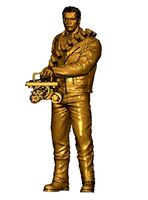
t-800
...t-800
3dexport
t-800
3ddd
$1
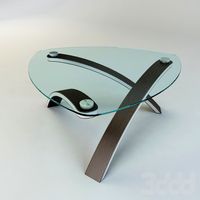
Table T
...table t
3ddd
журнальный
table t
3ddd
free

T-Rex
...t-rex
3ddd
t-rex
rrrrrr
3d_export
$5
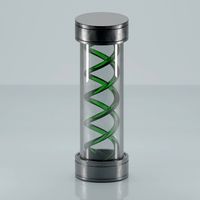
t-virus
...t-virus
3dexport
it's t-virus
3d_export
$5

T-26T
...t-26t
3dexport
artillery tractor on the t-26 chassis ussr
3ddd
$1
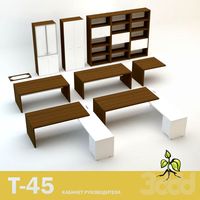
T 45
...t 45
3ddd
t-45
кабинет руководителя t 45
12 предметов
подробнее:http://www.prezident-mebel.ru/index.php?productid=1541
3ddd
free
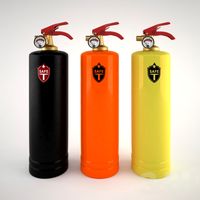
SAFE T
...safe t
3ddd
огнетушитель
креативные огнетушители от компании safe t
3d_export
free
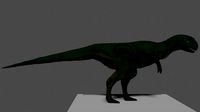
t-rex
...t-rex
3dexport
t-rex have normal map and base color textures
3d_export
$75
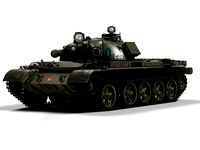
T-55
...nally, but these improvements made the tank more efficient and lethal. the t-55 was officially adopted by the soviet army in 1958
